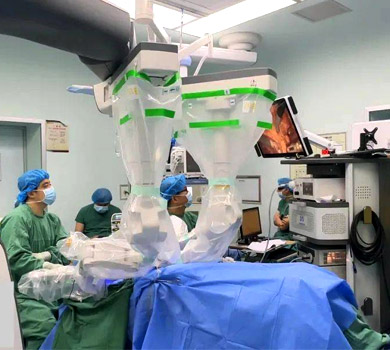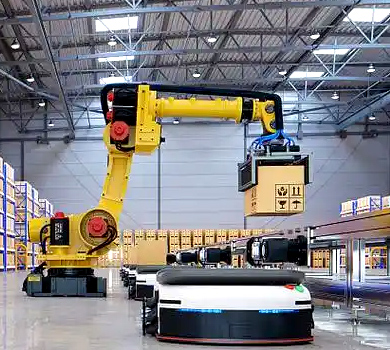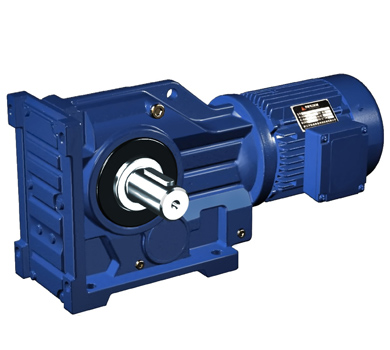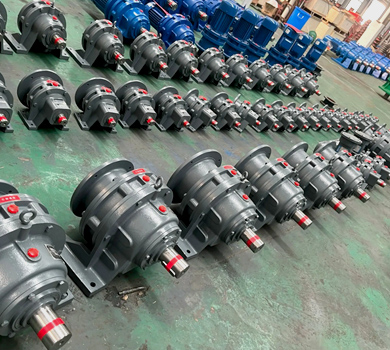Industry Challenges and Pain Points Analysis
The automatic dispensing and winding system for medical catheters is a highly specialized application in industrial automation, driven by the need for high precision and sterility in the medical device manufacturing sector. These systems typically include components such as automated dispensing units, high-speed winding machines, precision positioning systems, and cleanroom-compatible actuators. With the global medical device industry growing at a CAGR of 5.5%, automation is a key enabler to meet production demands while maintaining consistent quality and regulatory compliance.
However, the industry faces several critical challenges:
- Transmission system performance: High-speed operation requires gearboxes with exceptional torque density and dynamic response to handle rapid start/stop cycles and precise motion control.
- System stability: Any backlash or misalignment in the gear system can result in defects in catheter construction, leading to high scrap rates and production downtime.
- Energy efficiency: Continuous operation demands high-efficiency gearboxes to reduce heat generation and energy consumption, especially in cleanroom environments where temperature control is critical.
- Compact design: Limited space in medical automation equipment necessitates gearboxes that are not only high-performing but also space-efficient and lightweight.
- Environmental adaptability: Many operations occur in high-temperature or ultra-clean environments, requiring gearboxes with high thermal resistance and dust-tight sealing.
- Long lifecycle and maintenance: Medical devices often have long production runs; gearboxes must be designed for extended operation with minimal maintenance and high durability.
Key Role and Technical Requirements of Gearboxes in Medical Catheter Systems
Gearboxes are essential in catheter dispensing and winding systems for their ability to deliver high torque, maintain precise motion, and operate reliably in demanding environments. The core performance requirements include:
- High torque density: To support heavy-duty winding and dispensing tasks without excessive size or weight.
- High transmission accuracy: To ensure repeatable and consistent catheter winding patterns, critical for product safety and functionality.
- Fast response time: For synchronized motion with high-speed dispensers and robotics.
- Compatibility with diverse motor types: Including servo and stepper motors, for seamless integration with existing automation platforms.
- Robustness for heavy-duty applications: To withstand continuous operation and mechanical stress without performance degradation.
- Thermal resistance: To function reliably in high-temperature curing and bonding processes.
- High reliability and long service life: To minimize system downtime and reduce maintenance costs.
Moreover, environmental adaptability (e.g., cleanroom compatibility), lifecycle durability, and low maintenance frequency are critical for ensuring long-term productivity and operational efficiency in medical manufacturing.
Waimica’s Tower Gearbox Solution for Medical Automation
Waimica's Tower Gearbox (Industrial Tower Drive) is a custom-engineered solution specifically designed to address the unique demands of medical catheter dispensing and winding systems. It excels in overcoming the following challenges:
- Compact Design: Waimica’s tower gearboxes are engineered with a space-saving, modular architecture to fit into tight medical automation setups while maintaining high performance.
- High Torque and Precision: Delivering exceptional torque density and backlash control to meet the high-accuracy requirements of catheter winding and dispensing.
- High-Speed Response: Optimized for rapid acceleration and deceleration, ideal for synchronization with high-speed dispensing and robotic systems.
- Environmental Compatibility: Designed to operate in high-temperature environments (up to 150°C) and meets the stringent IP65 and cleanroom standards for medical applications.
- Low Maintenance and Long Lifespan: Bearings and gear sets are sealed for long-term durability, reducing the need for frequent maintenance and replacement.
Technical Highlights of Waimica Tower Gearbox
| Feature | Specification |
|---|---|
| Torque Range | z5 Nm to 100 Nm |
| Backlash | ≤ 5 arcmin |
| Efficiency | ≥ 92% |
| Input Flange Type | ISO 9409, DIN 546, IEC 60269 |
| Temperature Tolerance | -20°C to +150°C |
| IP Rating | IP65 / IP67 (customizable) |
| Mounting Options | Flange, foot, and shaft mounting |
Waimica’s tower gearboxes are constructed using high-grade alloy steels and precision-ground gears to ensure robustness in high-load and high-speed applications. The use of synthetic lubricants and advanced sealing technologies guarantees performance in extreme conditions while maintaining compliance with medical cleanroom requirements.
Conclusion and Waimica Brand Value
Waimica has consistently demonstrated technical superiority, timely delivery, and strong customization capabilities across various industrial automation sectors. Our tower gearbox solution for medical catheter dispensing and winding systems exemplifies this through:
- High-performance and compact design that meets the space constraints of modern medical automation systems.
- Excellent thermal and environmental resistance, suitable for sterilization and high-temperature processing stages.
- Seamless compatibility with global motor and controller standards, allowing for smooth integration into customer facilities.
As a "Made in China" alternative to traditional international gearbox manufacturers, Waimica provides high-value, cost-effective solutions without compromising on quality or reliability. We support customers through tailored engineering, long-term lifecycle planning, and flexible after-sales support, positioning ourselves as a trusted partner for future automation upgrades in the medical device industry.
With the industry moving toward higher precision, faster production, and more complex automation, Waimica is committed to delivering innovative and sustainable gear solutions that help our clients maintain competitive advantage and regulatory compliance.









